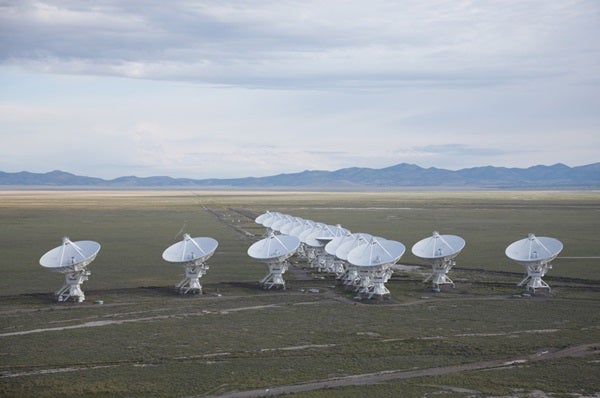“Part of the scientific process is investigating findings to see if they hold up. In this case, it looks like there’s a more mundane explanation for the original radio observations,” said Williams.
As their name suggests, fast radio bursts (FRBs) are brief yet powerful spurts of radio energy lasting only a few milliseconds. The first ones were only identified in 2007. Their source has remained a mystery.
“We don’t even know if they come from inside our galaxy or if they’re extragalactic,” said Berger.
Most FRBs have been identified in archival data, making immediate follow-up impossible. The new event, FRB 150418, is only the second one to be identified in real time. Radio observations reported in Nature purportedly showed a fading radio afterglow associated with the FRB. That afterglow was used to link the FRB to a host galaxy located about 6 billion light-years from Earth.
In late February and March of this year, Williams and Berger investigated the supposed host galaxy in detail using the National Science Foundation’s Jansky Very Large Array network of radio telescopes. The fantastic sensitivity of the VLA allowed the researchers to monitor the radio galaxy at the necessary cadence without having to disrupt the observatory’s regular schedule of operations.
If the initial observations had been an afterglow, it should have completely faded away. Instead they found a persistent radio source whose strength varied randomly by a factor of three, often reaching levels that matched the initial brightness of the claimed afterglow. The initial study also saw this source, but unluckily missed any rebrightenings.
“What the other team saw was nothing unusual,” said Berger. “The radio emission from this source goes up and down, but it never goes away. That means it can’t be associated with the fast radio burst.”
The emission instead originates from an active galactic nucleus that is powered by a supermassive black hole. Dual jets blast outward from the black hole, and complex physical processes within those jets create a constant source of radio waves.
The variations we see from Earth may be due to a process called “scintillation,” where interstellar gases make an intrinsically steady radio beacon appear to flicker, just like Earth’s atmosphere makes light from stars twinkle. The source itself might also be varying as the active galactic nucleus periodically gulps a little more matter and flares in brightness.
While the link between the fast radio burst and a specific galaxy has vanished, the astronomers remain optimistic for future studies.
“Right now the science of fast radio bursts is where we were with gamma-ray bursts 30 years ago. We saw these things appearing and disappearing, but we didn’t know what they were or what caused them,” said Williams.
“Now we have firm evidence for the origins of both short and long gamma-ray bursts. With more data and more luck, I expect that we’ll eventually solve the mystery of fast radio bursts too,” he added.










